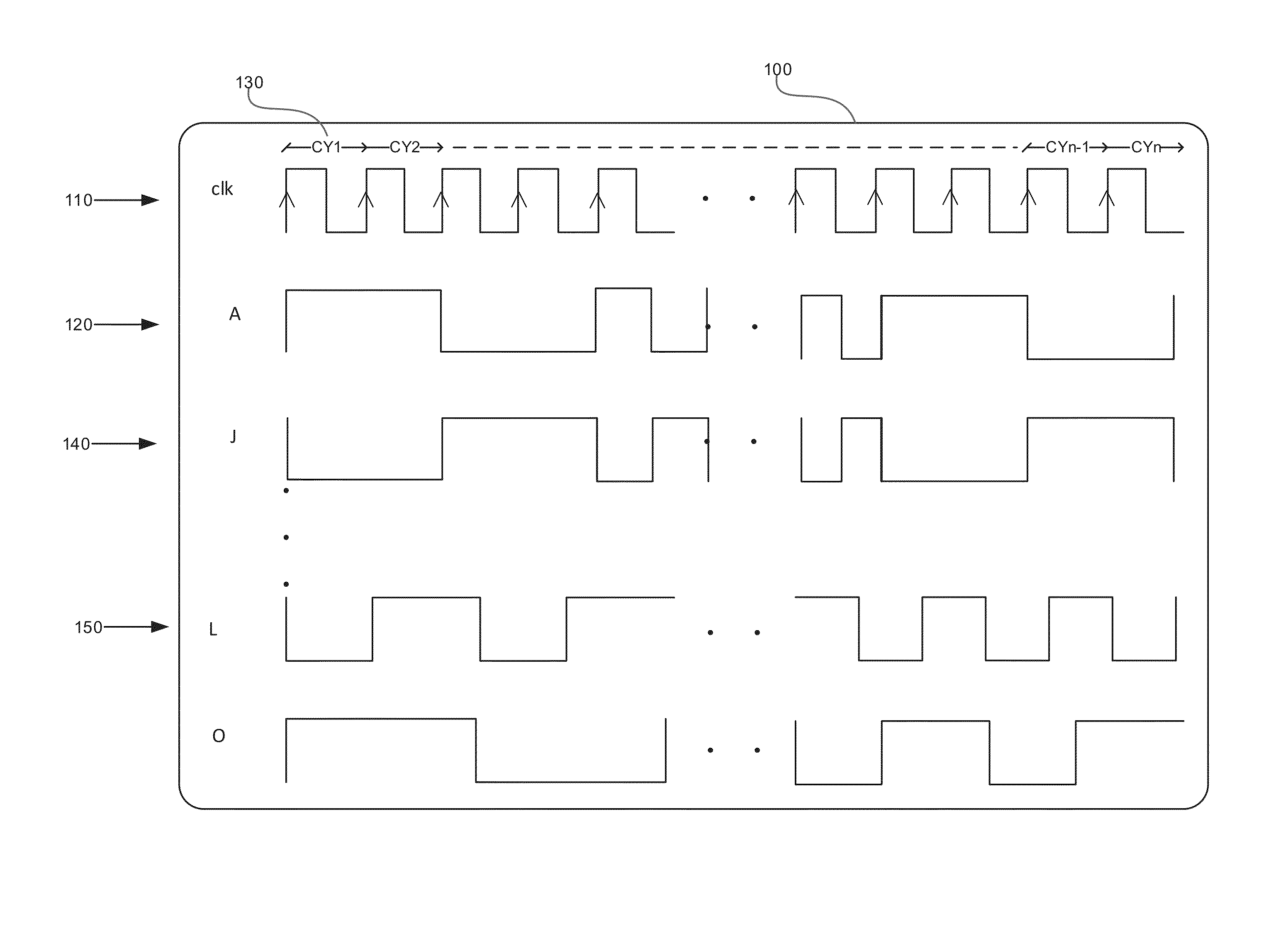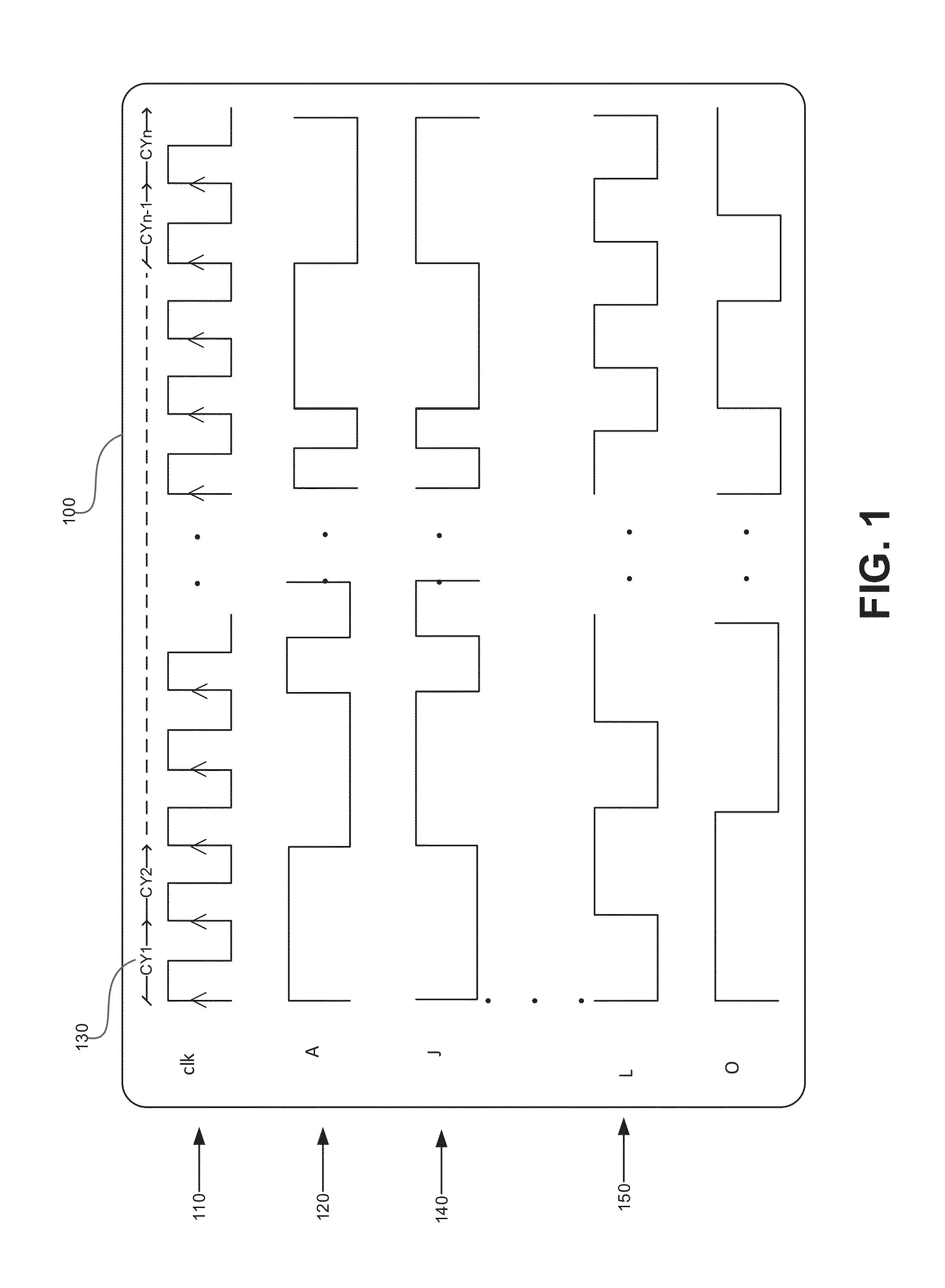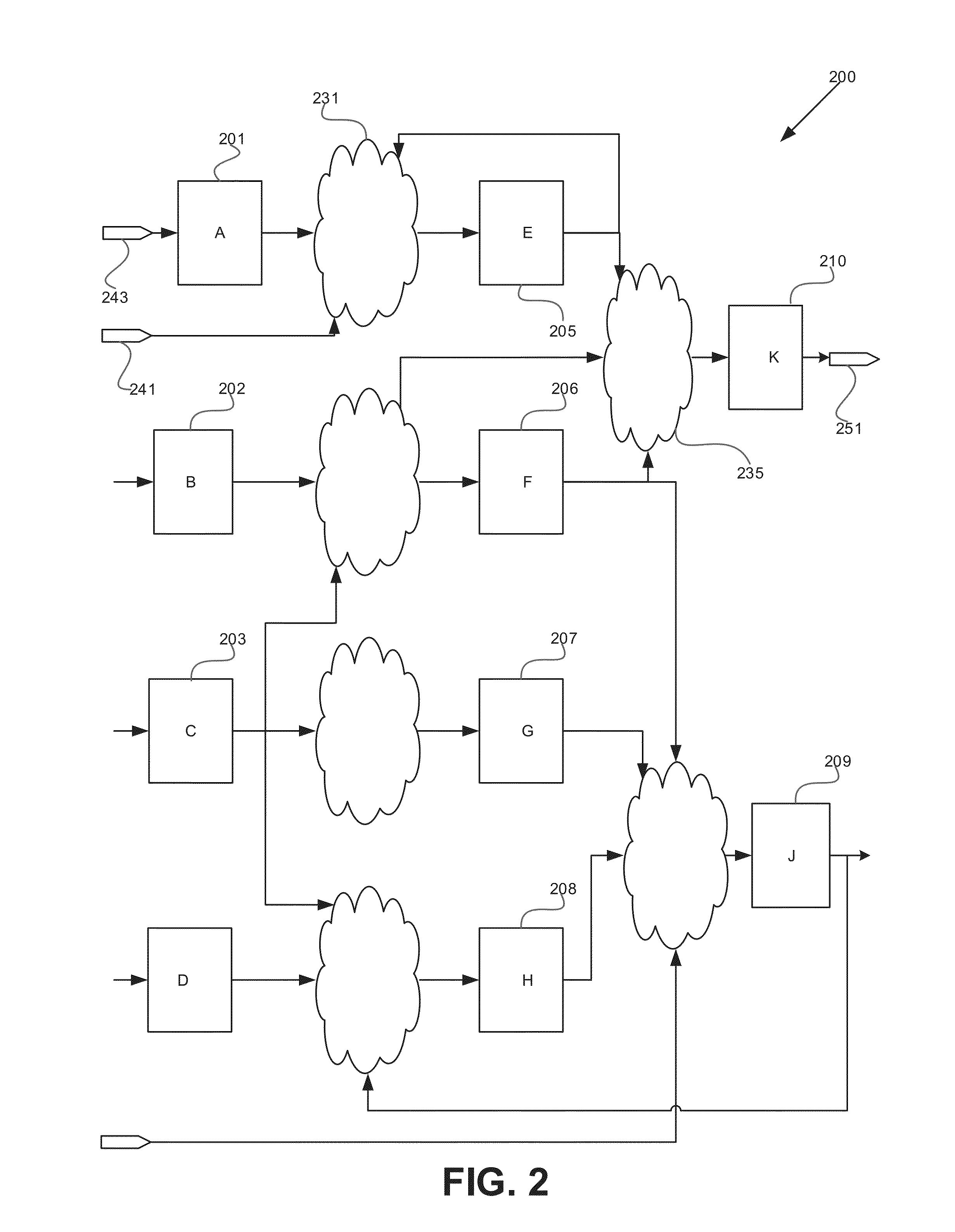Determining Transient Error Functional Masking And Propagation Probabilities
a transient error and probabilistic technology, applied in the field of microelectronic design, can solve problems such as memory glitches, value of output of the combo-gate to be flipped, and disturb an expected functionality of the devi
- Summary
- Abstract
- Description
- Claims
- Application Information
AI Technical Summary
Benefits of technology
Problems solved by technology
Method used
Image
Examples
Embodiment Construction
[0018]In the present disclosure the term “Transient Error” refers to a logical glitch on the output of a single combo-gate, (e.g., AND-gate, OR-Gate, XOR-Gate, MUX-Gate, or the like) or other kinds of gates. This glitch is temporary value change from 0 to 1 or 1 to 0 for a short period of time (sub-cycle). This glitch may be caused by electromagnetic radiation striking the combo-gate in the digital circuit, such as, a microprocessor, or the like. The bit flip may be a result of the free charge created by ionization in or close to a gate. The TE may occur spontaneously and unexpectedly due to an environment in which the circuit is operated.
[0019]TE may propagate through the combo-logic influenced by the said gate and get sampled (or latched) at one or more memory elements (flip-flop, latch, register or the like). Error Propagated (EP) is when a TE is inflicted at certain gate and the wrong value has propagated to the input of memory elements, and the memory element may sample the wro...
PUM
 Login to View More
Login to View More Abstract
Description
Claims
Application Information
 Login to View More
Login to View More - R&D
- Intellectual Property
- Life Sciences
- Materials
- Tech Scout
- Unparalleled Data Quality
- Higher Quality Content
- 60% Fewer Hallucinations
Browse by: Latest US Patents, China's latest patents, Technical Efficacy Thesaurus, Application Domain, Technology Topic, Popular Technical Reports.
© 2025 PatSnap. All rights reserved.Legal|Privacy policy|Modern Slavery Act Transparency Statement|Sitemap|About US| Contact US: help@patsnap.com



